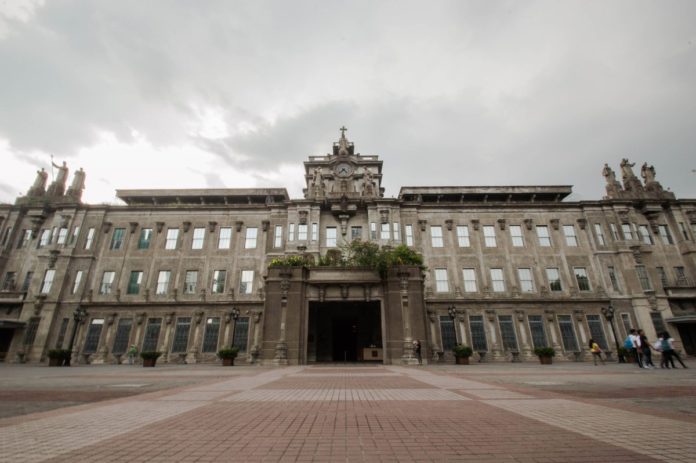IN THE last three years, drills in the University were not simply gauged on how fast the building was cleared of occupants. With the introduction of the Incident Command System (ICS) in handling emergencies such as earthquakes, fires, bomb threats and others, evacuation became only a part of the entire picture.
ICS is a standardized approach to the command, control, and coordination of emergency response. It is aimed at making all members of the Thomasian community aware of their roles in an emergency situation so that resources and manpower can be fully utilized and maximized.
“Now, we are being assessed as to how fast we are able to organize ourselves when we reach the assembly area, how fast we are able to conduct the head count, and how fast we are able to set-up the local incident and the university incident command post,” Juliano Parena Jr., Emergency Medical Services Chief of the Fire Emergency Paramedic Assistance Group, told the Varsitarian.
Earthquake drills in the University consist of three phases.
The first phase is a 45-second rumbling sound that signals an ongoing earthquake. All occupants of the building are supposed to perform the duck, cover and hold method.
The second phase is an announcement to be ready for an evacuation.
Students should, at this moment, quickly visualize their exit routes and where the assigned assembly areas are. Safety marshals shall also be in their positions.
The third phase, which is the sound of a continuous siren, signals the start of the evacuation.
Upon reaching the assigned assembly area, the students, faculty, heads of offices and other personnel shall now begin the head count so as to be able to report to the local incident commander who in turn relays the information to the university incident command system.
The University ICS then starts its own protocol to ensure if patients are being taken care of and that there are no more people left inside the buildings.
Parena suggested that there should be an office tasked to develop the protocols and not just a committee that meets when needed.
“There should also be regular force of emergency response teams which are on standby 24/7 and ready to respond to any emergency in the University. It is time to make safety a matter that is to be taken seriously and not just an item that will be discussed when needed,” he said.
Drills are performed constantly and are practiced basically to help one achieve a level that would make his/her response an automatic reaction on the stimulus.
“Earthquake drills are helpful for me, especially since we are very much prone to this kind of disaster. I may not have experienced an extreme kind of earthquake shock yet, but I know that I can use the things I learned from the repetitive earthquake drills that I’ve had,” Kalee Velasco, a Faculty of Pharmacy student said in an interview.
According to the Metropolitan Manila Earthquake Impact Reduction Study, a 7.2-magnitude earthquake from the West Valley Fault may result in the collapse of 170,000 residential houses and the death of 34,000 people.
114,000 individuals will be injured while 340,000 houses will be partly damaged.
Of the 34,000 people projected casualties within an hour of the earthquake, 90 percent will be killed from the pressure of collapsed structures. Some of them will initially survive but will die if they are not immediately rescued.
“I think proper dissemination and orientation of exit routes must be implemented in order to show that safety is indeed a top priority of the University,” said Eden Lagmay, the Red Cross Youth Council committee head of public health.
Main Building
In 1920, Dominican priest Fr. Roque Ruaño, O.P., a licensed engineer and professor in the Faculty of Engineering experimented and combined the two types of foundation namely spaced footing and isolated footing for the main building.
Plans were completed by 1923. But some fine tuning still had to be made following the Great Kant? earthquake of September 1, 1923 which flattened Tokyo and Yokohama.
Eventually, construction began in 1924. It was composed of forty smaller edifices joined together with loose concretethat will rock independently in case of earthquake. The Main Building is the first earthquake-resistant building in the Philippines.
“[The Main Building] is also the oldest building in the University which has been exposed so long under the elements and exposure can sometimes weaken a structure,” Parena said.
The Main Building serves as the academic home of the university’s Faculty of Civil Law, College of Science, and the Faculty of Pharmacy.














